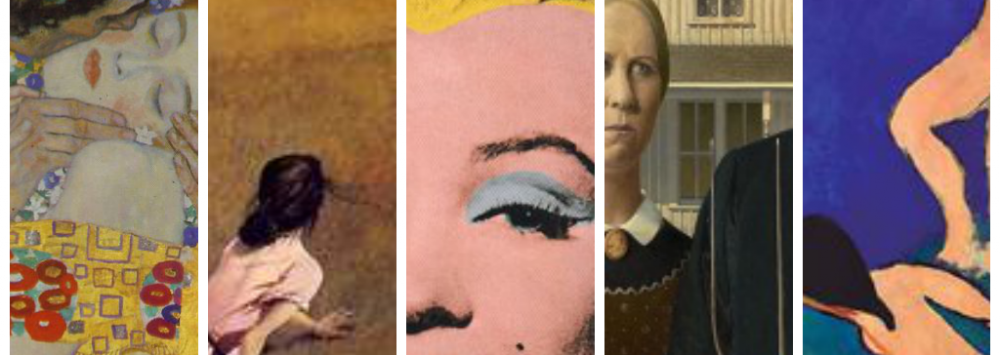Henri Matisse
Katie McCarthy
Biography
Henri Matisse was born December 31, 1869 in Cateau-Cambrésis, France. He lived with his mother, father, and younger brother. His mother was very supportive of him and “loved everything [he] did.” She too had been a painter and had worked in the house paint section of Henri’s father’s store.
He studied law in Paris and before that attended the College de Saint-Quentin and the Lycee (secondary school) Henri-Martin. After finishing school Matisse worked as a clerk in a law office.
Matisse started painting when his mother brought him art supplies while he recovered from appendicitis. She encouraged him not to follow the conventional rules of art and “listen to his…emotions” He fell deeply in love with painting, and disappointed his father by changing his profession from law to art. And, with his mother’s advice– helped create the Fauvist movement.
Matisse went back to Paris to study art, working at the Académie Julian. He stopped after a year because he didn’t like the strict style they enforced. He then studied with a more “progressive” instructor. And, eventually was admitted to the École des Beaux-Arts. Matisse was known from the start to be unconventional in his painting style.
He was elected to be “an associate member of the Société Nationale” in 1896, allowing him to show paintings annually at the Salon de la Société without needing to have them reviewed first.
In the years 1897 and 1898 Matisse met with painter John Peter Russell who introduced him to Impressionism and his friend Vincent Van Gogh’s work. This exposure changed Matisse’s then drab palette and started what turned into a deep love and understanding of color and a quintessential fauvist style.
Matisse’s first masterpiece was “The Dinner Table.” When he was lacking inspiration or was suffering a block, he would sculpt. And, Matisse was most inspired by post-impressionist artist Cézanne.
At one point, in a particularly low economic status, he went back to a dark palette and almost gave up art. But, of course he found his way back and continues to work even into old age and through sickness (working from a bed or wheelchair.
He died in 1954, in Nice, France; where he had spent most of his life.
Fauvism and Matisse
Matisse is considered one of the leading artists of the Fauvist movement, and his work with it’s use of color and outlining, clearly represents the movement. His goal was consistently to “discover ‘the essential character of things’” and that is what he strove to convey in his work. With the influence of his mother’s encouragement of free expression, and the color palette and brush strokes learned from the impressionists, Matisse lead the way with avant-garde work.
Description of Media and Technique
Matisse’s work went through different stylistic phases as he went through different conditions in his life. His work evolved from dark, traditional pieces, to colorful, free, and primitively formed works, and also to more graphic, paper cut outs exhibiting an even bolder sense of color blocking and simplification.
21st Century Comparison
Grace Hartigan’s work can be compared to Henri Matisse’s by the use of bright colors, freely shaped human forms, and the use of outlining. Though art critics categorize her work to be close to Abstract Expressionism, it is very close to Fauvism in its color palette.
Personal Reflection
I personally am more drawn to Matisse’s paper cut pieces and simplified color blocked paintings. I am not as drawn to his darker and more detailed pieces. This is most likely because of I am drawn to color and organization in my daily life, I do not like clutter, grunginess, or lackage of light; thus my dislike for darker hued pieces with lots going on in them. I also admire Matisse’s ability to create such expressive and non-realistic work in a time when that was not accepted or common. That he could create something completely new to the world, from inspiration quite different from what he then created is incredible to me. The creativity in his soul was truly a gift.
Bibliography
Matisse: Life and Painting. N.p., 2011. Web. 27 Mar. 2014. .
Dance (II), 1910, 260 x 391 cm, oil on canvas
Portrait of Madame Matisse (Green Stripe), 1905, 40.5 x 32.5 cm, oil on canvas
Woman with a Hat, 1905, 79.4 x 59.7 cm, oil on canvas
Icarus, 1947, 41.9 x 26 cm, gouache on paper cut out
The Kings Sadness, 1952, 292 x 386 cm, gouache on paper cut out
The Dinner Table, 1897, unknown size, oil on canvas
Dolls, Grace Hartigan, 1976, 124.5 x 208.3 cm, oil on linen







